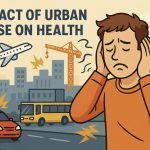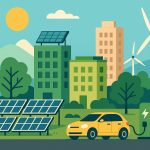In an era of rapid urban expansion, the relationship between urban planning and ecology is becoming increasingly critical. How we design our cities has a profound impact on the natural environment, and conversely, ecological principles can shape more sustainable and livable urban spaces. The intersection of these two fields is no longer optional—it is essential for the future of both human wellbeing and planetary health.
What Is Urban Planning?
Urban planning is the process of designing and organizing the physical structure of cities and towns, including:
- Housing and zoning
- Transportation systems
- Green spaces
- Water and energy infrastructure
- Waste management
Modern urban planning must now also account for environmental impact, climate resilience, and resource conservation—goals that naturally align with ecological priorities.
Ecological Challenges Created by Poor Urban Design
When cities are developed without environmental foresight, they contribute to several ecological problems:
- Deforestation and habitat loss from expanding suburbs
- Urban heat islands caused by concrete and asphalt absorbing heat
- Air and water pollution from traffic and industrial zones
- Loss of biodiversity in areas that were once rich ecosystems
- Flooding and soil erosion due to poor drainage systems
In short, bad urban planning accelerates environmental degradation and reduces the quality of life for both people and wildlife.
How Ecology Improves Urban Design
Incorporating ecological principles into urban planning leads to more sustainable, resilient, and health-promoting cities. Here’s how:
1. Green Infrastructure
Elements like parks, green roofs, urban forests, and rain gardens help:
- Absorb stormwater
- Cool urban areas
- Improve air quality
- Provide habitats for birds and pollinators
2. Smart Zoning and Density
Limiting urban sprawl by promoting mixed-use developments and compact cities helps:
- Preserve surrounding ecosystems
- Reduce the need for long commutes
- Support walkable, community-oriented neighborhoods
3. Sustainable Transport Systems
Planning for public transit, bike lanes, and pedestrian zones cuts emissions and promotes health while reducing car dependency.
4. Energy Efficiency and Low-Impact Design
Building codes that encourage solar energy, energy-efficient buildings, and natural ventilation help reduce environmental footprints and resource consumption.
5. Waste and Water Management
Urban areas can be designed with closed-loop systems in mind, where water and waste are treated, reused, or recycled within the city—minimizing pollution and pressure on ecosystems.
Case Study: Eco-Cities
Some cities are actively demonstrating this synergy:
- Copenhagen, Denmark: Integrates cycling infrastructure, energy-efficient buildings, and coastal flood protection.
- Singapore: Known for its “City in a Garden” concept, blending high-density living with lush greenery and vertical forests.
- Freiburg, Germany: Features car-free zones, solar energy mandates, and ecological neighborhoods.
These cities are proving that growth and sustainability can coexist with proper planning.
Why This Connection Matters
With over half of the world’s population living in urban areas—and that number growing—how we plan our cities will determine the future of both civilization and the environment. Ecologically informed urban planning:
- Reduces greenhouse gas emissions
- Protects natural ecosystems
- Builds resilience to climate change
- Enhances the physical and mental health of citizens
- Fosters a sense of community and well-being
Glossary
- Urban heat island – A phenomenon where cities become significantly warmer than nearby rural areas due to human activities and materials like concrete.*
- Green infrastructure – Natural systems and green spaces that provide environmental and social benefits within urban settings.*
- Mixed-use development – Urban areas designed to include residential, commercial, and recreational spaces in close proximity.*
- Closed-loop systems – Processes that reuse resources like water and waste rather than discarding them.*


